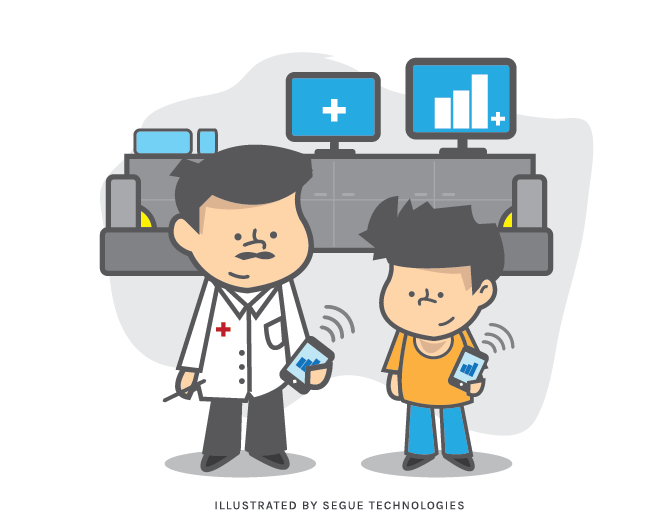While preparing for the 2013 National Health IT Week, Segue Health was fortunate to have the opportunity to speak with Dr. Doug Fridsma, Chief Science Officer and Director of the Office of Science and Technology Policy in the Office of the National Coordinator for Health Information Technology (ONC) about his thoughts regarding “The Next Generation of Health IT.” While it is tempting to talk about the potential effect the use of technologies such as Google Glasses or the rumored Apple iWatch could have on Health IT, Dr. Fridsma stated that it is always dangerous to try to predict the future; instead, he envisions the real innovations and surprises will come from the impact of patient engagement.

The recent focus on the transition to Electronic Health Records (EHR) has given the Health IT world a tremendous push, but EHRs are primarily focused on providers. mHealth is more about consumer and patient engagement. One of the goals of health care reform is to create a system that is really about consumer engagement, an environment in which patients are not just the object of the health care system but fully fledged members of the health care community, engaged as a vital part of the whole process.
Consider the Fitbit. This particular smart phone gadget tracks several meaningful aspects of a patient’s health: exercise, sleeping, blood pressure, and weight. It generates a huge data set of information, more than a provider might actually want to review, but in Dr. Fridsma’s eyes, the real value of this technology is less about collecting information than in how it is engaging the patient. Individuals paying close attention to these personal health aspects are people who are engaging in a major way in their own wellbeing. And in health care, we are just at the very beginning of seeing how this type of engagement is going to look.
We see patient engagement also happening through social media – patients not only expect, but are increasingly demanding connectivity and interaction. People are using social media to solve problems and provide understanding that used to require the work of researchers and reporters. Yet it is important to recognize the strengths and limitations of this tool. Social media users can perceive a sense of urgency or reality based on input from other users that really doesn’t capture enough data to equate to a formal medical study. But Dr. Fridsma thinks the real potential of social media is still emerging. The way patients are using social media and associated tools is significantly increasing the way they engage in their health care, to include everything from taking pictures of ongoing symptoms to share with a provider to reaching out to “patients like me” to connect with others experiencing similar symptoms.
For Dr. Fridsma, the anticipation is less about new technologies and more about watching the novel ways consumers will apply these technologies to the health care environment. Smart phones didn’t decide to include hi-res cameras to support health care, but the result has been that patients increasingly use their phones to help their providers make better diagnoses. He illustrates his point with an historical analogy: in the early 1900s, there was a series of articles, aimed at the medical professional, about the “physician’s auto,” discussing how the purchase of an automobile might impact a doctor. Articles looked at how using this new technology might impact costs, safety, and the delivery of health care. Then, in 1912, Ford began producing the Model T; suddenly, cars were so affordable that private vehicles were reasonable for the general public. As patients came to commonly own their own mode of transportation, health care was greatly impacted. Doctors stopped making house calls and patients began reliably driving themselves to seek treatment.
This example illustrated what Dr. Fridsma sees happening now: Ford didn’t begin producing their cars to impact the delivery of health care, but the implementation of this technology resulted in permanent changes to consumer engagement and how health care was provided. The same thing is happening again and again as mobile technology continues to evolve and patients continue to find ways to make technology matter in their own treatment.
The ONC continues to work on getting data out of paper and into an electronic format through Meaningful Use and other initiatives, but Dr. Fridsma emphasizes that a real definition of success is about people pulling sound information, demanding it, and making healthy choices based on it. He envisions patients making choices about providers as well, based on the provider’s ability to provide the sort of connected and integrated health information management patients want. His prediction: Once consumers get a real sense of the value Health IT can deliver, it will be impossible to stop providing such services.
Segue Health appreciates the time and insights of Dr. Fridsma as we prepare to celebrate the 2013 National Health IT Week! We appreciate the opportunity to partner with ONC in collaborative outreach for the benefit of Health IT and consumer engagement overall. The future continues to look interesting and bright


